We tend to find Ireland is not prone to extensive periods of drought and hard ground, so you may think concussion is not be a huge issue for your horse; but concussion can be caused by more than just hard ground due to lack of rain and its effect is the same.
It is usually negatively associated with its effect on your horse’s legs and linked with jumping and cantering or galloping on hard ground during the summer months but it can also occur with excessive road work in trot and hard arena surfaces. Poor conformation, bad shoeing and inadequate preliminary work in the fittening of a horse can be contributory to concussion related issues. Excessive concussion is something we strive to minimise.
What is concussion?
Concussion is defined as the force that is sent vertically up the leg as a result of the hoof striking the ground. This force is increased when the ground surface is not yielding to the foot fall. While ground that is too yielding brings its own issues and is also problematic. The horse tends to naturally carry 60% of its weight on the front legs and when galloping and landing over a fence takes the full force initially on a single leg. In general concussion related injuries tend to occur in the limbs of the horse, by the nature of its evolution it is standing on a single digit equivalent to our middle finger.
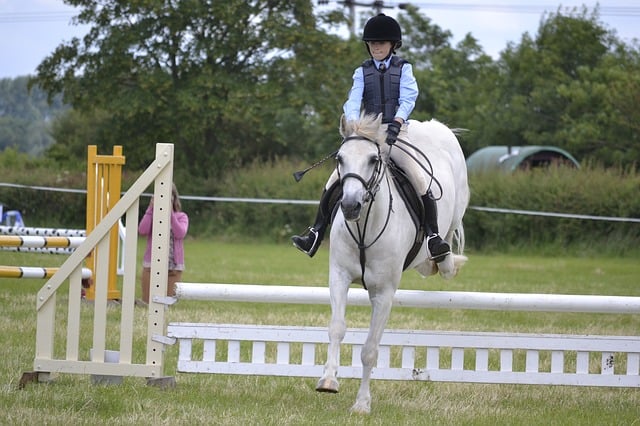
When landing over a 1.20m fence the initial leg bears an individual weight of 2050kg, about 4 x the weight of the average horse. How many of us can do that? It’s no wonder that there are injuries.
One of the first factors to consider is age. While older horses suffer from wear and tear that is often related to how hard they have worked, how carefully they have been looked after, or sometimes the age they started hard work. It is important to remember that a horse is not mature until it is at least 6 years old, age restrictions for horses competing under FEI rules are in place to ensure only horses with suitable maturity can partake in certain competitions, the age restrictions vary depending on the discipline and the level of competition.
Most sports horses start their education as 4 year olds and it takes about 2 years to develop the structural strength required to withstand and recover from strenuous competition without a detrimental effect.
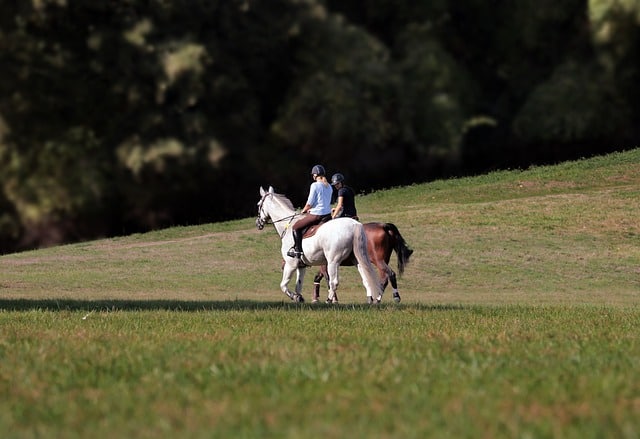
Although youthful tissues are more flexible and more elastic they can suffer damage that will ultimately become a limiting wear and tear factor in older age. So care at the beginning is time added on at the end of a horses working life. Many well produced horses continue to perform at top level into their 20’s.
The tissues in the horse that are most susceptible to concussion injury are bone, tendon, ligament and cartilage, so it makes sense to have them as well conditioned as possible. However they do not stand alone as they rely on the other systems of the body to keep them in good condition, it’s a holistic approach.
Nutrition can have a huge influence, as can the correct training program that will prepare the horse to withstand the concussion it will, at some point, inevitably encounter.
Although different disciplines ultimately require different types of fitness the basic preliminary and developmental work are the same. It’s a bit like building a pyramid, the wider the base and foundation, the more stable it is as you build at a higher level. Skimp on the foundation and it gets a bit wobbly the higher you go and cracks start to appear.
Concussion and Bone.
A certain amount of controlled concussion is necessary to develop the horse’s tissues. This starts in the first stage of fittening known as the preliminary stage.
The preliminary stage builds the foundation. Work should be slow and steady so as not to stress unconditioned systems and structures. This work is traditionally known as “hardening the legs”.
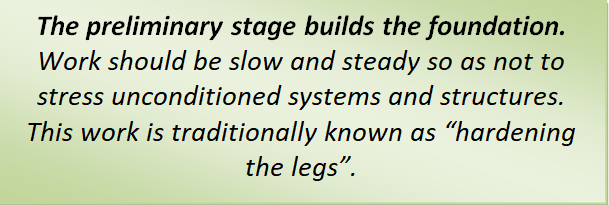
The low level of controlled concussion is essential and allows the strengthening of bone and avoids damage.
As stress is loaded on the bone more minerals are laid down and old brittle bone cells are replaced by younger more durable and elastic ones.
Work up hill will increase the effort the horse has to make but will not increase the level of concussion on the legs. This process needs to be done on a firm level surface and was traditionally achieved by walking on the road. This is not always an option on many of our busy highways but an almost preferable alternative can be achieved on wet firm sand. Working on soft or unlevel surfaces can cause injury to tendons muscles and ligaments and won’t achieve the desired result within the bone.
It is a slow and steady process allowing for the replacement of the cells that have been worn out with younger more resilient ones.
Throughout the training program this controlled concussion is vital while an over exposure to concussion is detrimental.
Bone Is continually remodelling in response to the physical demands placed on it, it needs to be able to recover in-between times.
Alternating short periods of controlled concussion to stimulate strength, followed by less intense work to allow recovery, will prepare the horse for the demands of competing but not cause detrimental changes that may become a weak link.
Concussion on muscles and tendons.
The concussive force that is transferred up the leg from hard ground eventually has an impact on the muscles in the upper limb and sling system of the forehand.
It causes jarring and soreness, the muscles become tight and tense. Tired, stiff or tight and sore muscles that are jarred by concussion are not supple and elastic. As tendons connect muscle to bone, when a muscle stops functioning efficiently the tendon is forced to over load thus causing injury. Muscles that are tired or jarred need to have time to recover and relax to become elastic and supple to avoid overloading tendons.
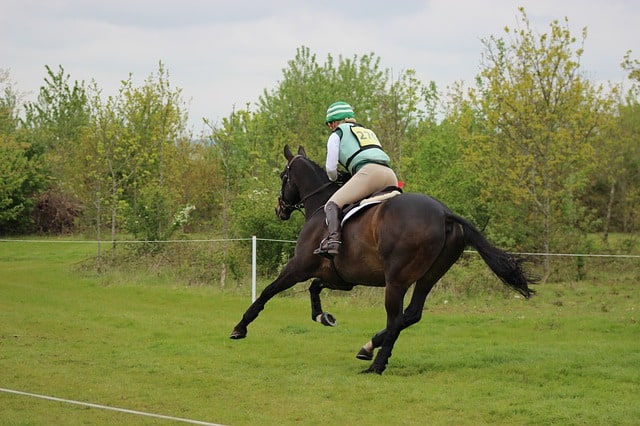
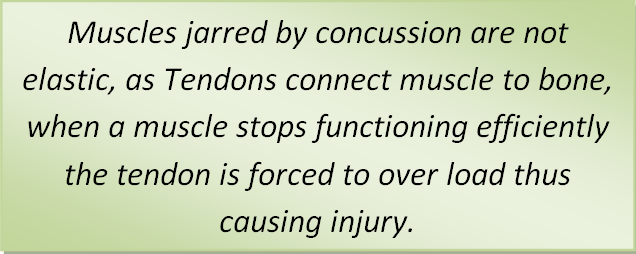
It is thought that the ability of tendons to stretch is determined by the time a horse has reached 2 years of age, so turn out for young horses is vital. After this time it is unlikely that you can improve the structure and flexibility of the tendon. However you can reduce the flexibility if damage is incurred.
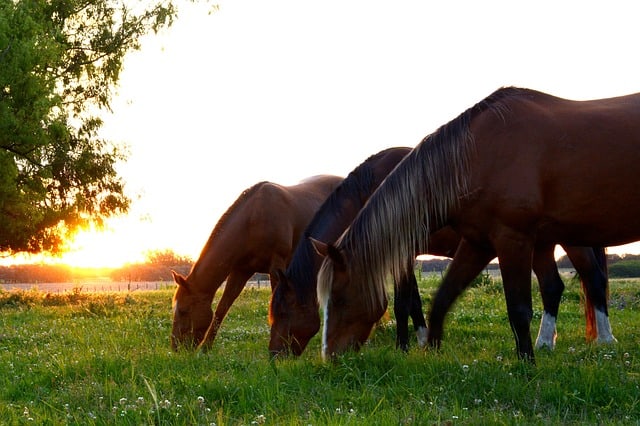
Tendons work to capacity a lot of the time and repeated over stretching of the tendons, causes the fibres of the tendon to pull apart, disrupt and lose the ability to stretch. This may not show initially but it will cause the rest of the tendon to pick up extra stretch and consistent repeated loading will eventually cause a noticeable injury.
Tendons are slow to heal as they have a relatively poor blood and nerve supply, initial pain is minimal. Once damaged, tendons tend to heal in a haphazard way leaving a permanent reduction in stretch. This then predisposes the horse to more injury.
Concussion on ligaments and joints.
Ligaments and joints can also show wear and tear from concussion. Ligaments generally connect bone to bone and act to stabilize joints. Ligaments, like tendons have a poor blood supply, but unlike tendons they don’t stretch much but they do absorb some shock. Their job is generally to stabilize the bone and joint and regulate its range of movement. If the horse has good conformation and the ground is level they are less likely to become damaged.
The forces of concussion put more pressure on the synovial joints, such as the knees, fetlocks, stifles and hocks. A synovial joint consists of two bone ends covered by articular cartilage. The cartilage is smooth and resilient, when properly lubricated, it allows for frictionless movement of the joint. Joint fluid fills the joint capsule and acts to lubricate the joint and works like a shock absorber.
A joint problem arises when damage occurs faster than repair. If the joint is weakened through injury or everyday wear and tear, the horse is no longer supported or fully mobile.
Hard ground or rougher terrain than your horse is used to will place more stress on joints. Leaving enough time for the horse to recover after strenuous exercise or competition will allow them to repair and reduce the chance of lasting problems. There are many joint supplements on the market specifically formulated to aid joint health.

Paying attention to the hoof balance can help keep a level bearing surface that will reduce unbalanced joints further up the leg, this helps keep loading of the joints even. Keep hooves moist and well-oiled. Preserving moisture in the hoof helps it to remain more flexible, which allows for the heel to expand when it comes in contact with the ground and absorb some force from the hard ground.
NB* Overwork, either due to insufficient conditioning, rigorous training or working a tired horse too hard, is the most common reason injuries occur.
At some stage it is inevitable that you and your horse will encounter hard ground. When schooling, gradually help your horse build up a resistance on different surfaces, this will help protect from them injury, keep their joints supple, and improve condition in the long run. It is important to do some training on the type of going your horse is likely to compete on to acclimatize the horse so he can adapt to the demands that will be placed up on him.
This Article was originally published in the July 2019 Issue of Irish Sport Horse Magazine. Jessica Soley BHSI is a Level 5 Performance Coach and Senior Assessor for The British Horse Society. Having Competed and Run her own Competition Yard she is now an Equine Tutor for the QQI Equine Courses at level 5 & 6 , run by KWETB in Kildare.
